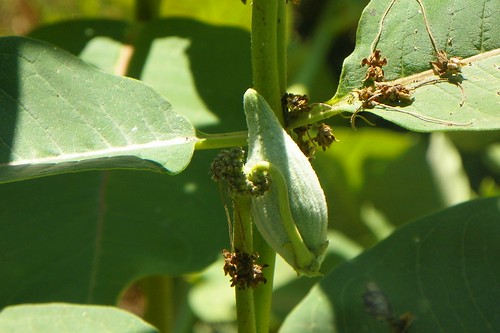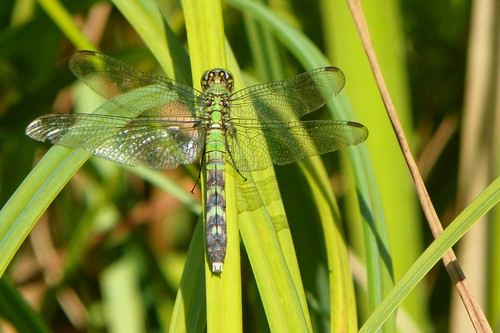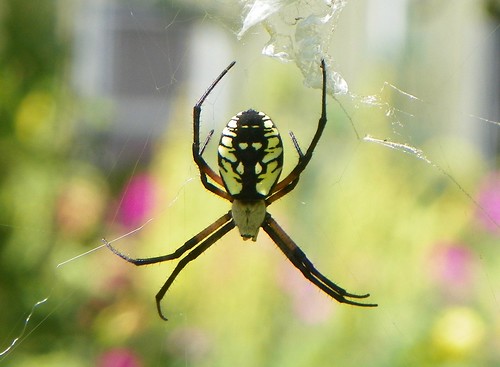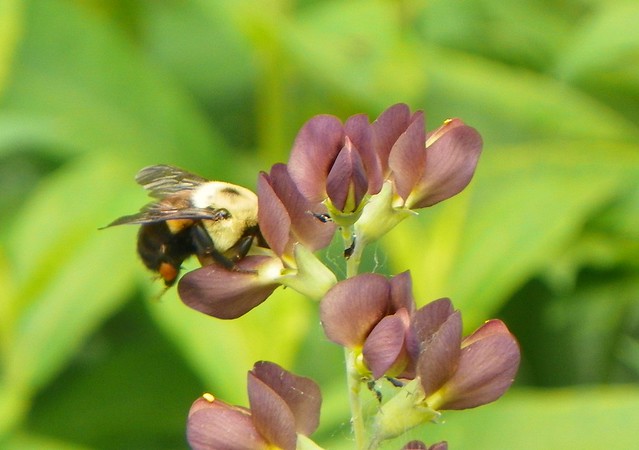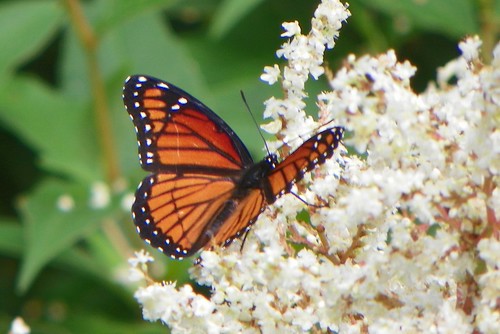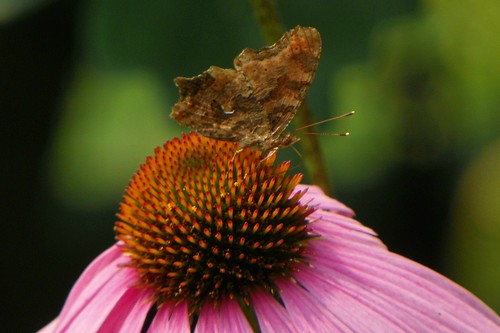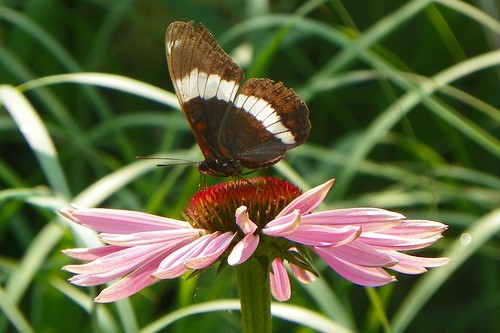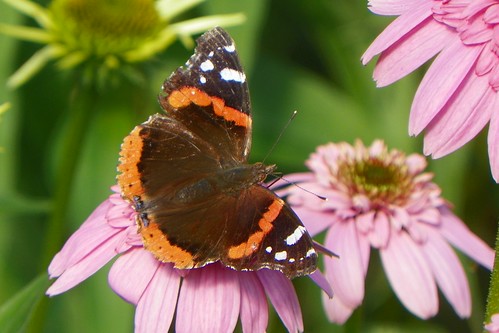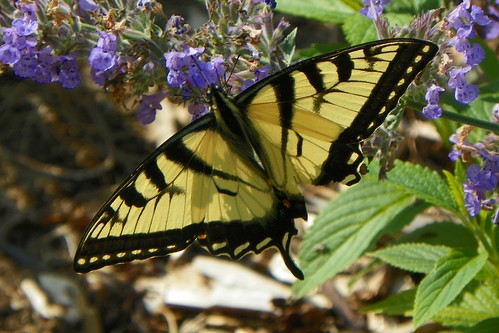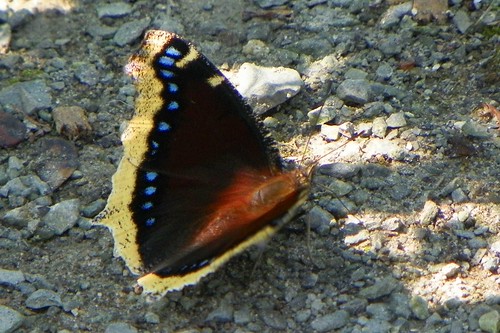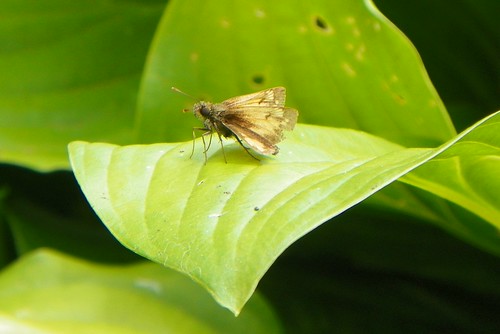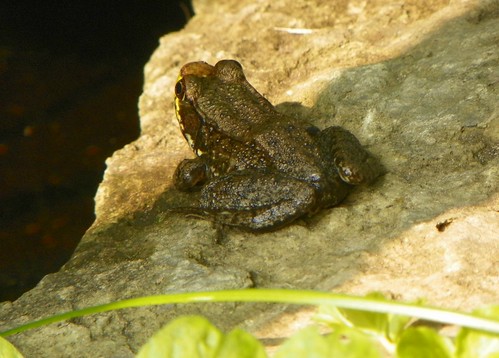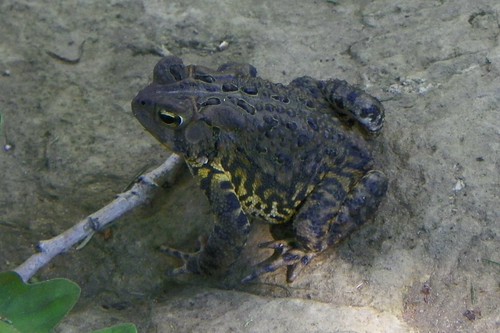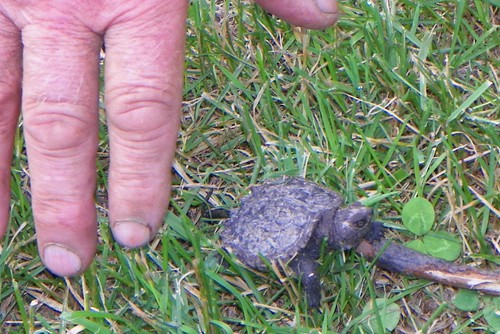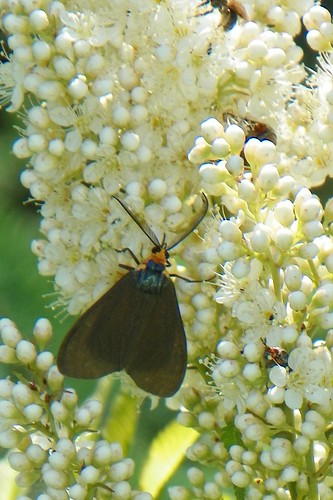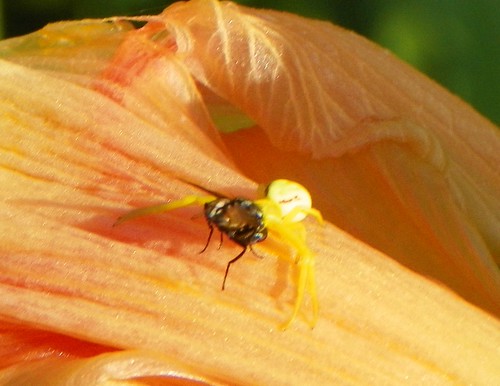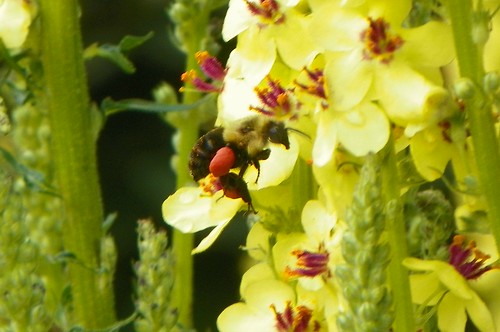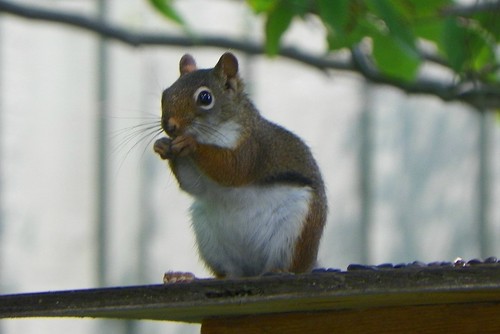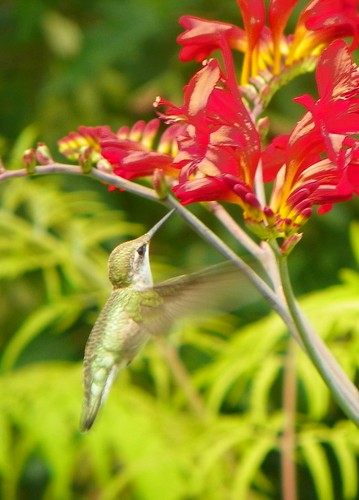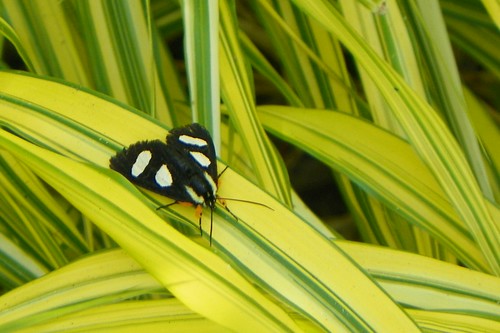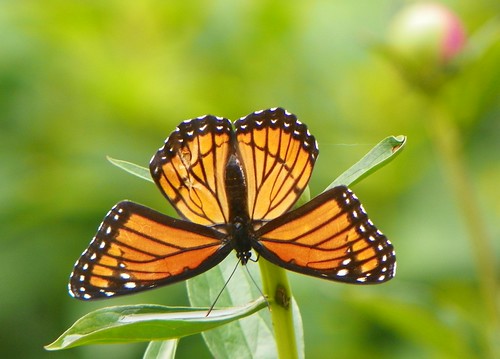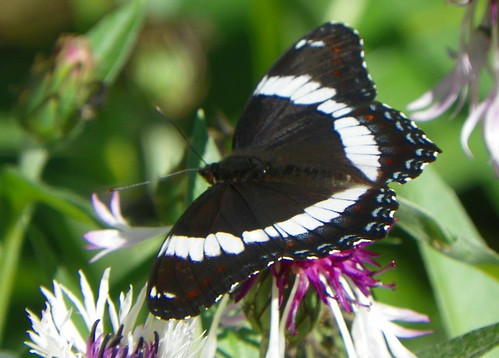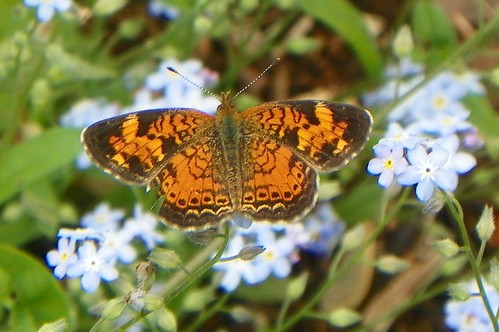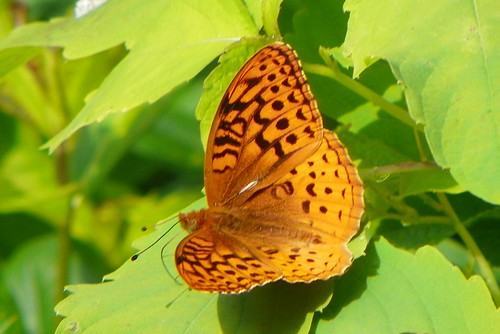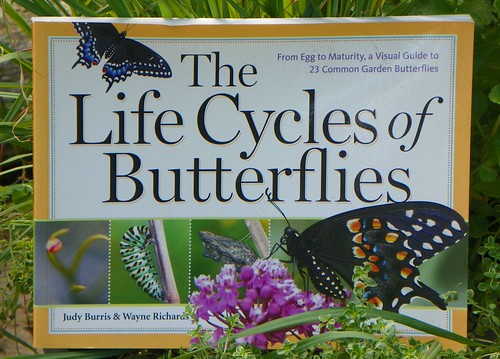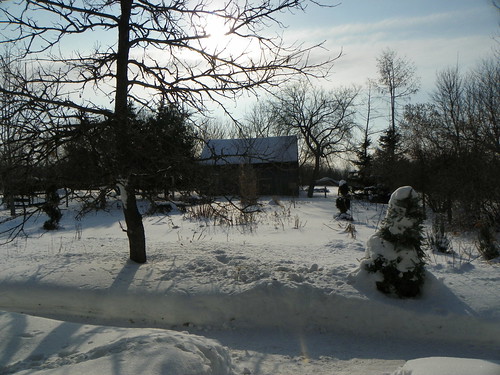
Halfway through February! We are well along on our journey through winter. Every day, the sun sets a little later and it is cheering to still have daylight at six in the evening. Still, the view out the front door is daunting. It is hard to believe that the July garden, pictured below, is just a few months away.
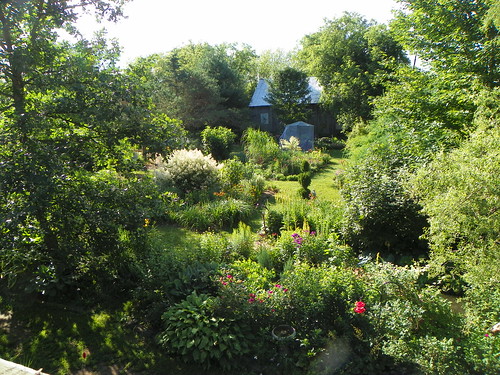
This annual transformation from green abundance to snowy slumber, and then back again, is like a miracle, amazing to observe. Still, in February, the snowy days drag on relentlessly.

I went out and measured the snow depth in one of the passageways cleared by the snowblower. We have about 16 to 18 inches of snow right now. Certainly, the plants will be glad of this deep blanket because temperatures have been brutal, with a frosty wind making -20C and lower temperatures even more biting.
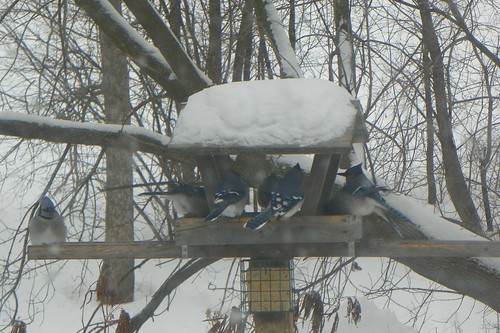
Another annual miracle is that tiny birds can survive these punishing temperatures. I stock the bird feeders daily, and in return, I am rewarded with a view of their comings and goings. I put out peanuts, both shelled and unshelled, and large stiped sunflower seed for the blue jays. They watch for me, and when I venture out to the feeder, a shriek goes up. With a whirl of wings, a flock of these noisy, clamourous, beautiful birds descends upon the feeder.
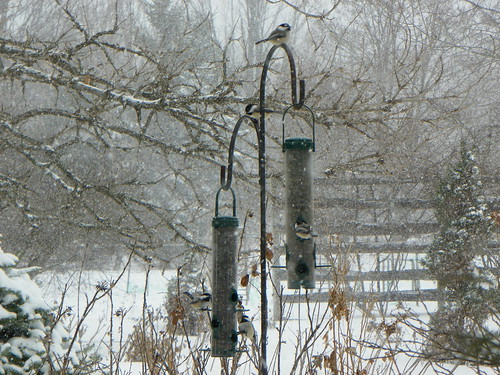
A steady stream of busy chickadees attends to the two silo feeders stocked with black oiled sunflower seed. I often fill these feeders twice in a day to meet demand.
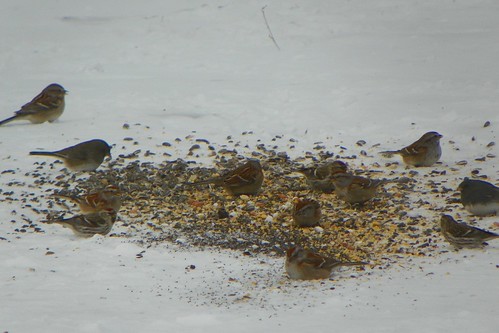
A mixed seed combination attracts a variety of birds to the platform feeder and the driveway. There are American Tree sparrows, juncos, redpolls, goldfinches, mourning doves and a few cardinals. Adding a few crusts of bread attracts a pair of crows, who, like the blue jays, watch for my arrival.
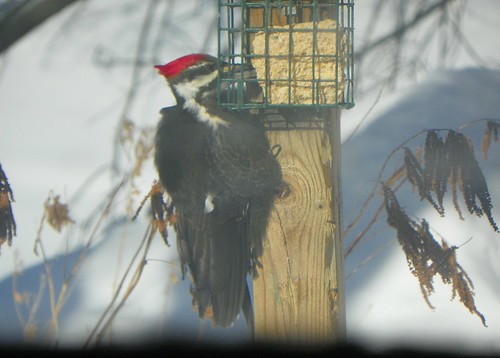
A pair of suet feeders attract a number of Downy and Hairy woodpeckers, but recently we had a first: a visit from a large Pileated Woodpecker.
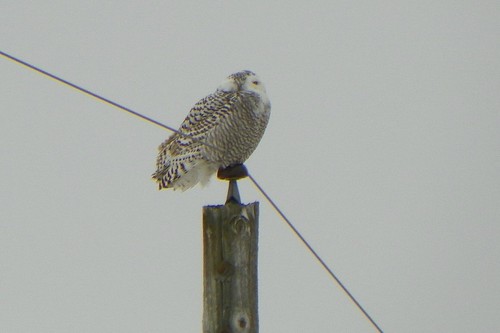
Last winter, there was an unusual movement of Snowy Owls south of their usual range. This year, I have spotted just one, this female, perhaps the same one that I saw last year, who favors the top of a hydro post to look out over the fields.
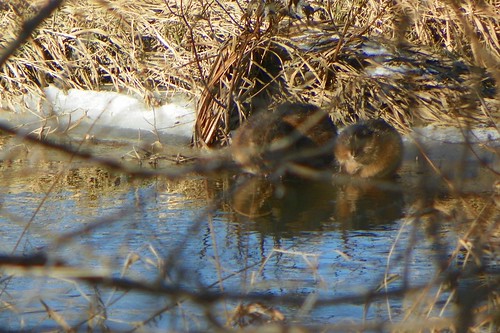
Animal activity is not so conspicuous. However, I did see this trio of muskrats early in the winter, just before the river froze over for the season.
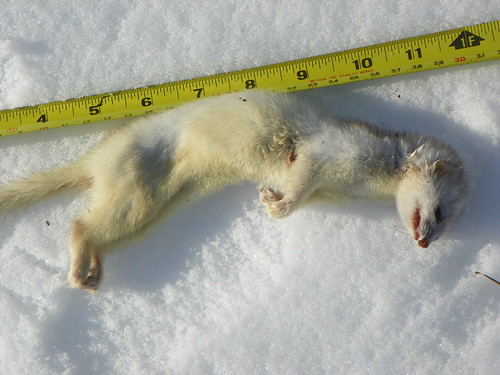
This unfortunate short-tailed weasel, dressed in an ermine-white winter coat, was found on the driveway one morning. These little carnivours are reportedly quite common in Ontario, but it is unusual to see one. They travel and hunt mostly at night, in areas with good cover, where they seek out small prey such as mice and voles, amphibians and bird eggs or nestlings. They are reputed to be fearsome, fierce hunters.
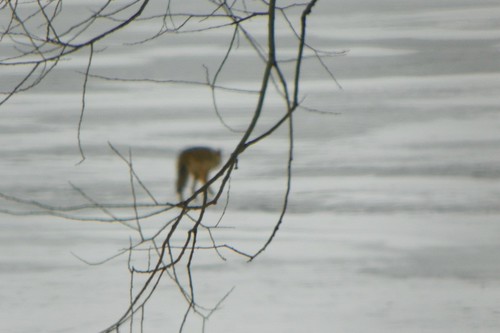
My most surprising sighting of the winter was this coyote. I spotted it one day as I was driving home along the St. Lawrence River. It was far out on the ice, looking back to shore. As I watched, it made up its mind to travel on, and set out across the frozen water, leaving Canada and heading toward the American shore.
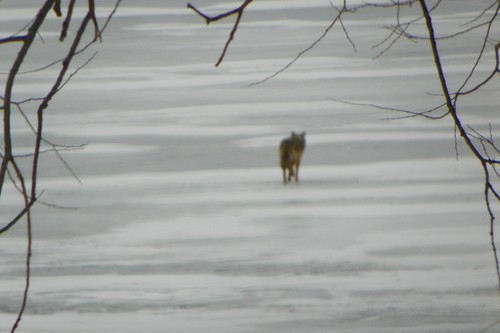
Read Full Post »

